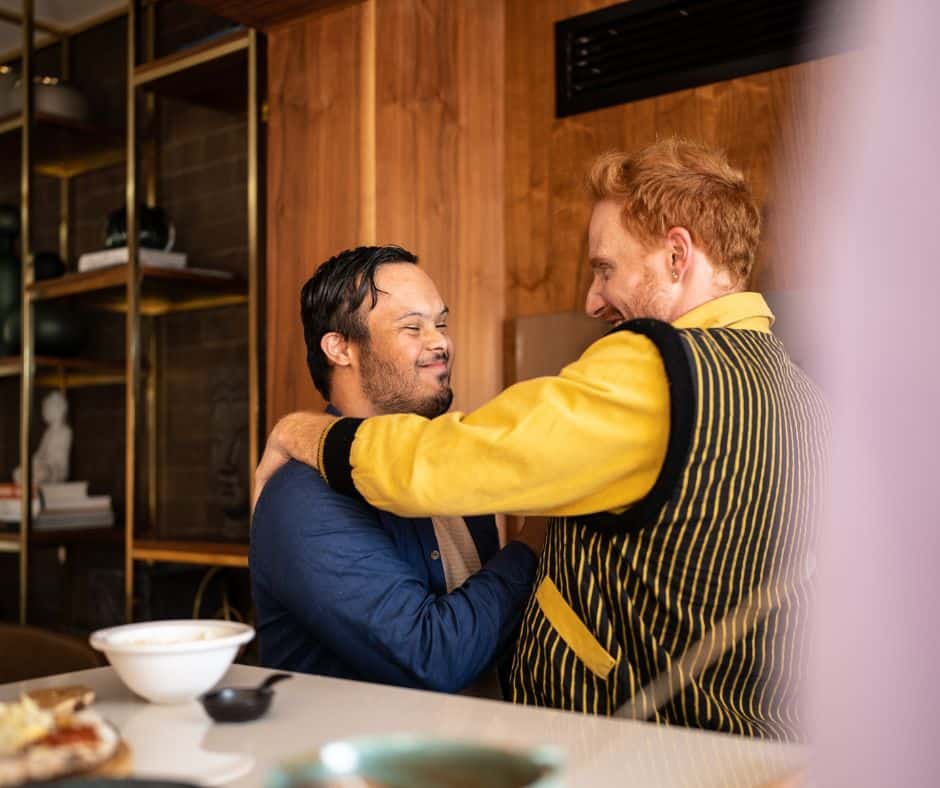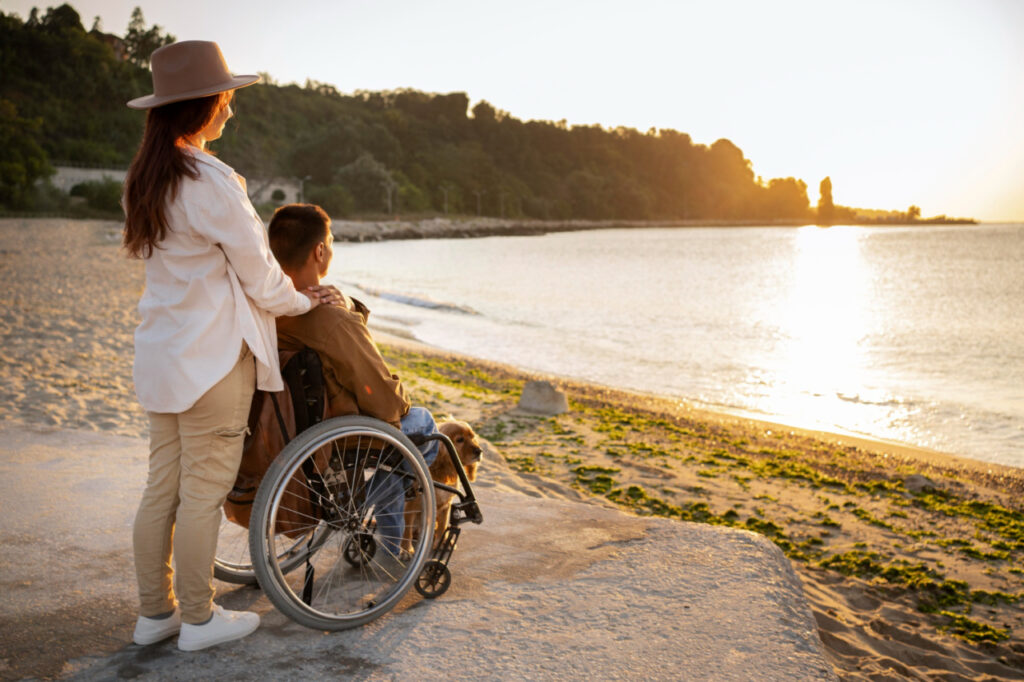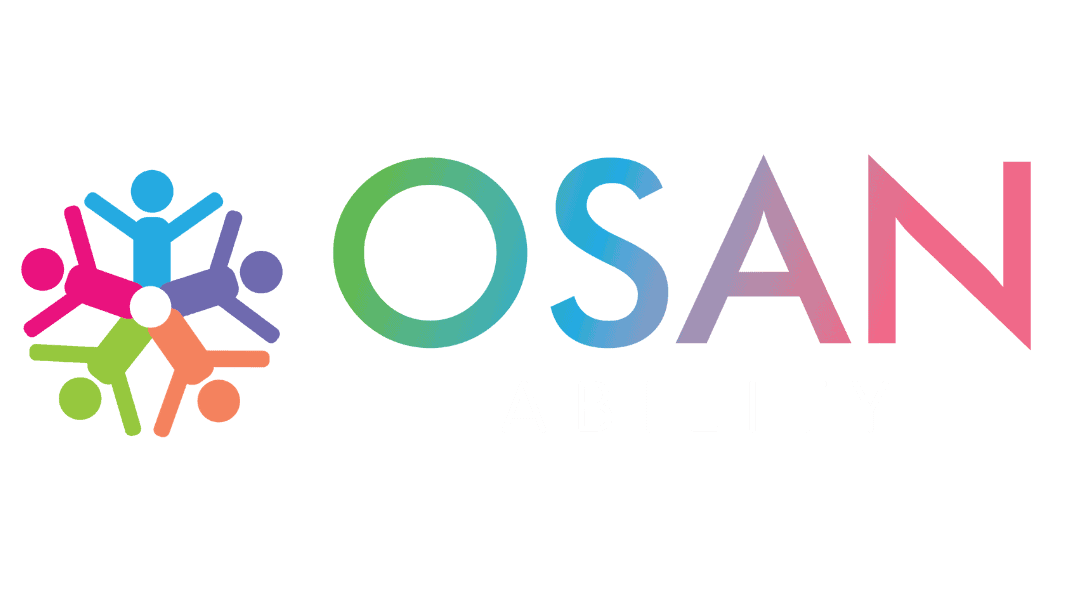Being a carer to a family member or a friend can be extremely rewarding, but at the same time can also be stressful. It’s common to have caregivers with episodes of stress and drained energy. In fact, research shows that over 70% of caregivers have CES-D scores indicative of depressive symptoms.
Respite care provides carers with a much-needed break to recharge and restore balance to their life. What’s more, it allows your loved one to meet new people and gain new perspectives.
You can choose between several types of respite care, depending on the needs of your loved one. Let’s look at what respite care is and the respite options that are available to you.
What is respite care?
Respite care is a temporary break to relieve carers of their usual duties and responsibilities. It allows caregivers to run their errands, take care of their children, or engage in fun activities like swimming, exercising, or catching up with friends.
It also allows your loved one to meet new people and get a fun change of pace. Both carers and your disabled or aging loved one can benefit from respite care by receiving anywhere between a few hours or several days break.
Let us look at the different types of respite care available:
Different Types of respite care
Several different respite care options are available, depending on the setting and the needs of the carer and your loved one. Here is a list of 7 of the most common types of respite care.
1. In-home respite care
Here, a care worker comes to your loved ones’ home to look after them so that the carer can go out for a few hours. The care worker may also decide to take your loved one out for a walk, drive, or coffee. This respite option is available either during the day or overnight.
With in-home respite care, you can be sure that your loved ones are in safe hands and will be well cared for while their caregivers take a short break.
2. Centre-based day respite care
This respite allows your loved one to attend social and recreational centres for several hours during the day. At the centre, your loved ones meet trained respite workers and other people, which is great for social wellbeing.
Respite services at centres are usually available at certain times, mostly between 10 am to 3 pm. Depending on their wish, your loved one may sometimes get transport to and from the centre and a meal.
On the other hand, the caregiver gets some time off – to attend to their personal needs or errands.
3. Overnight or weekend respite care
Here, the respite carer workers go to stay with your loved one in their home overnight to look after them, giving the caregiver a night of rest. Alternatively, your loved one may spend the night away from home in a respite cottage or house.
Cottage respite involves taking your loved one to a host family or a local place in your community. Usually, this respite lasts for 2-3 days – which translates to 2-3 days of off-work for the carer.
4. Community access respite care
As the name suggests, this kind of respite care involves taking your loved one to a community-based activity like a social event. Usually, a care worker accompanies them to help them build stronger relationships with people and take care of their needs. This form of respite allows seniors or people living with a disability and opportunity to interact socially and partake in mentally stimulating tasks.
Also, it allows your loved ones to engage in fun activities with like-minded individuals. In turn, this reduces their stress, anxiety and improves their quality of life.
5. Residential respite care
This kind of respite involves taking your loved one to a nursing home. It’s suitable when the carer needs a relatively long break and may need a holiday. You can be sure that your loved one is receiving quality care in the residential respite care. However, you can choose the level of care your loved one will receive from the provider.
6. Emergency respite care
In some instances, your loved one may need respite services due to an emergency, such as when their primary carer falls sick. Your loved one gets care services from another care worker, allowing their primary carer some time off.
7. Consumer-directed respite care
This is the type of respite care that’s tailored to meet your loved ones’ situation and needs. For instance, a package may include a combination of in-home and residential respite depending on the specific scenario.
Get respite care today!
Whether you’re your loved one’s primary carer or they have a caregiver, a break from the daily caregiving role can often be needed. Respite care benefits all parties involved. It allows careers to be at their best while providing their clients with an opportunity to meet new people and engage in new experiences.
If you’re looking for respite care services in Australia, look no further than OSAN Ability Assist. We offer a range of respite care options that are tailored to the specific needs of our clients. Contact us today for more information.










